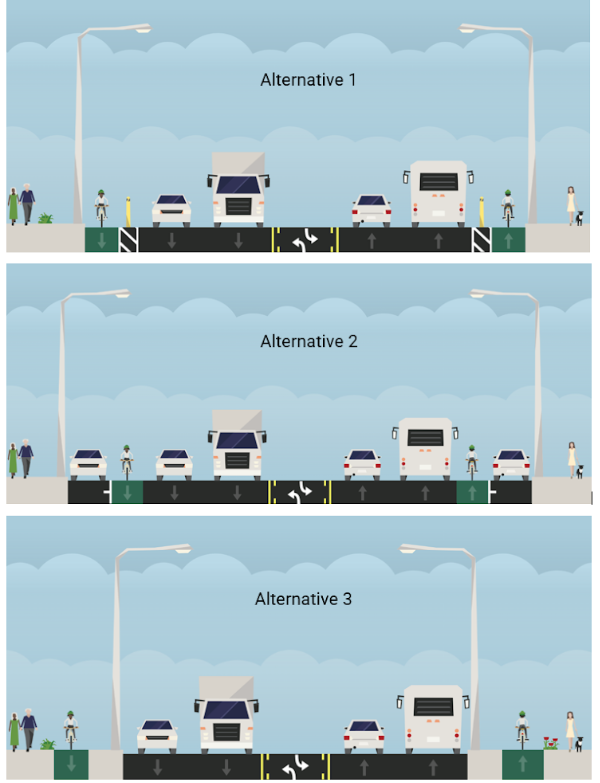Truth matters. Community matters. Your support makes both possible. LAist is one of the few places where news remains independent and free from political and corporate influence. Stand up for truth and for LAist. Make your year-end tax-deductible gift now.
PCH in Long Beach could get a protected bike lane, but Caltrans needs your input first

Caltrans is proposing a protected bike route along a stretch of Pacific Coast Highway in Long Beach and the agency needs public input by Friday, June 21.
The project comes from the Caltrans Active Transportation (CAT) Plan, which identifies pedestrian and bicycle needs across Los Angeles and Ventura counties. Under the CAT plan, PCH has been identified as top priority to improve ways to accommodate multiple modes of transportation.
The bike lane would also meet goals of the Long Beach Bicycle Master Plan, which recommended bike lanes along PCH to grow their bicycle network. A survey is available that details three design options for the bike lane.
About the bike lane proposal

- Alternative 1 would convert a lane into a Class-IV protected bicycle path in each direction (That’s a separated bike lane that could include physical barriers, grade separation, or inflexible posts to protect the lane. In this case, the city is considering using concrete barriers to separate traffic.)
- Alternative 2 would accommodate a striped Class-II bike lane in each direction (a painted or marked bike lane)
- Alternative 3 would remove a lane and construct a raised parkway for pedestrians and cyclists with landscape separations
Why it matters
Caltrans says the project is meant to “redesign the road to enable safer and more accessible travel for bicyclists” and to encourage commuters to use alternative modes of transportation.
Kaferman Guan of Car-lite Long Beach, a bicycle and safe streets advocacy group, said the bike path is badly needed to protect bicyclists from traffic fatalities.
“PCH is a high injury corridor, just generally throughout Long Beach, because it intersects with so much of city life,” Guan said.
Guan, who bikes to work at Long Beach City College using PCH, said it’s a big risk sharing the road with drivers.
”I and several students have had lots of close encounters with drivers. Rolling up, only looking left, and continuing to barrel through,” Guan said.
Kerry Beth Larick of Car-Lite Long Beach has been tracking traffic fatalities along the corridor using data from UC Berkeley's Transportation Injury Mapping System. Larick said from 2021 to 2023, there have been 37 car crashes including cyclists, with one fatality, on PCH.
Larick said the design of that portion of PCH enables drivers to speed.
“It's natural for drivers to speed coming over the bridge that goes over the 710 Freeway on the L.A. River, that takes you down,” said Larick.
According to the city of Long Beach, pedestrians, bicyclists and motorcyclists made up 65% of Long Beach traffic fatalities in 2017. And in 2022, 45 people died during traffic collisions.
At a public forum hosted by Caltrans, Matthew Wehner, also of Car-Lite Long Beach, expressed concern over how pedestrians and cyclists could safely cross the streets because the plan did not clearly address how the project will accommodate bus stops and intersections.
What’s next
After public comment, Caltrans will begin the environmental study in 2026. Construction could begin in spring 2028, with completion of the lane by summer 2029.








